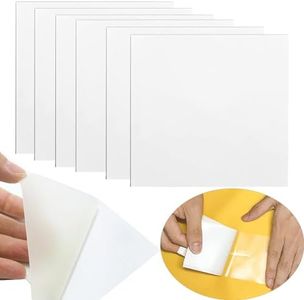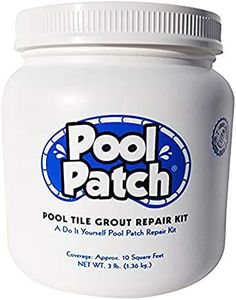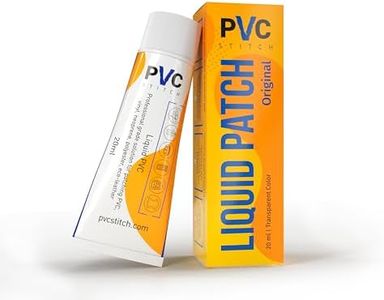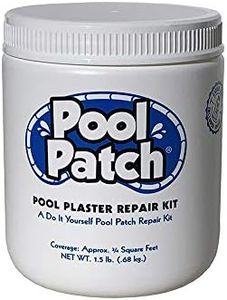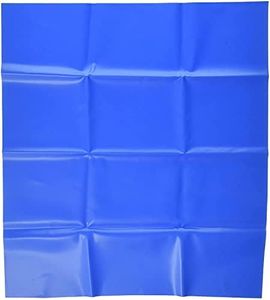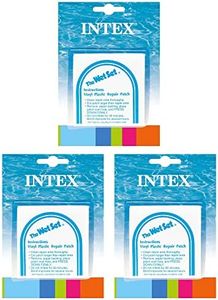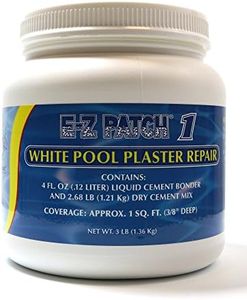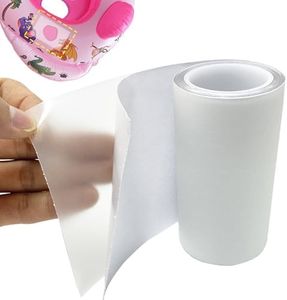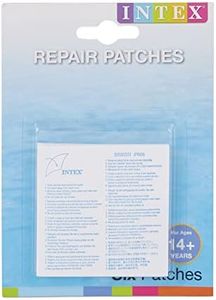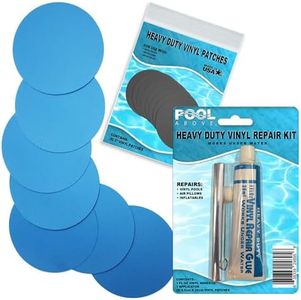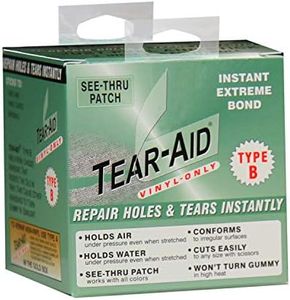We Use CookiesWe use cookies to enhance the security, performance,
functionality and for analytical and promotional activities. By continuing to browse this site you
are agreeing to our privacy policy
10 Best Pool Patches
From leading brands and best sellers available on the web.Buying Guide for the Best Pool Patches
When it comes to buying pool patches, the goal is to make sure you get a product that repairs leaks or tears effectively and lasts a long time. Choosing the right pool patch isn’t just about grabbing the first one you see - you need to match the patch material and size to your pool’s liner and the type of damage you’re fixing. By understanding the key specifications, you'll end up with a repair that's easy to apply and actually works for your specific situation.Material CompatibilityMaterial compatibility refers to whether the patch works with the material of your pool, such as vinyl, PVC, or concrete. This is important because a patch designed for a vinyl pool may not stick properly to a concrete surface, and vice versa. Most pool patches will mention what materials they are made for, so always check your pool's liner type before choosing a patch. If you have a vinyl pool, pick patches labeled for vinyl use; for other surfaces, make sure the patch lists your pool material in its compatibility.
Patch SizePatch size means the physical dimensions of the patch itself. Larger holes or tears need bigger patches, while tiny holes can be covered with smaller patches. Using too small of a patch won’t hold, but a patch that’s much larger than necessary may not adhere smoothly. When picking a patch, assess the damage – cover it with the patch, making sure there’s extra space around the hole for a strong seal. Some products offer bigger sheets you can cut to fit, which is great for irregular shapes or larger repairs.
Adhesive TypeAdhesive type is the glue or bonding method the patch uses, which plays a key role in how well it sticks. There are self-adhesive patches and those that require you to apply a separate glue. Self-adhesive ones are faster and cleaner to use, while separate glue options are sometimes stronger, especially for bigger or underwater repairs. If you want a quick fix and the damage is small, a self-adhesive patch may be enough. For underwater or more serious leaks, or if you want a longer-lasting hold, choose a patch with a strong adhesive or one that’s made for underwater use.
Underwater ApplicationSome pool patches are designed to be used underwater, and this feature means you don’t need to drain your pool to make a repair. Underwater application is important if the leak is below water level and you want to avoid emptying the pool, saving time and effort. If most of your potential repairs are above the water, this may not matter, but if you want the most convenience and flexibility, look for a patch suitable for underwater use.
Durability and UV ResistanceDurability and UV resistance describe how well the patch stands up to sun exposure, chemicals, and everyday use. Patches with UV resistance last longer outdoors, resisting cracking and peeling caused by sunlight. A durable patch won’t quickly break down, especially if it will be under water or exposed to chlorine. When evaluating this spec, think about whether your patch will be in direct sun or exposed to pool chemicals. If yes, prioritize products that mention durability features or UV protection for a repair that lasts through the season and beyond.

